Electrovaya Scribbler SC500 Tablet PC
by Matthew Witheiler on March 18, 2003 2:25 AM EST- Posted in
- Laptops
Construction: Under the Hood (continued)
The rear of the Scribbler SC500's motherboard is much more bare chip wise compared to the front. On the logic side of things the only chip of relevance to us is a Ricoh R5C552 chip which serves to control both the PCMCIA slot on the system as well as the compact flash slot and firewire port.

An additional set of 128MB memory chips are also found on this side of the motherboard making for a total of 256MB of onboard memory.
Directly over these memory chips lies the system's single SODIMM slot for memory expansion beyond the 256MB of onboard memory. In our unit this bank was filled with a stick of Micron PC133 memory rated at CAS 3.
Along with the single SODIMM the back of the motherboard is also home to two mini-PCI slots. In the Scribbler SC500 one of these slots is occupied with an Intel M3AWEB56GA combination 802.11b and 56kbs modem card and is actually made by Xircom. The mini-PCI card is able to accept two 802.11b antennas and this turns out to be how many antennas the SC500 comes with. Locations of the antennas (as shown later in the review) are conducive to providing reception whether the unit is being used in portrait or landscape orientation.
As we mentioned the system actually comes with two mini-PCI slots, something rarely seen in system this size. We suspect that the second PCI slot is used in the higher-end Scribbler SC800 model to control the fingerprint scanner that the SC800 ships with. In the case of the SC500 the second mini-PCI slot if free and available for use in future upgrades if desired. Perhaps even a third party mini-PCI fingerprint scanner could be used.
The Scribbler SC500 comes with a 30.0GB hard drive. In our unit the 30.0GB of storage capability was provided thanks to a Toshiba MK3018GAP hard drive. We have seen this 4200RPM drive in previous mobile systems and its specifications place the drive right in the middle of the pack when it comes to performance and power consumption.
In the picture below you can see pictures of the back of the motherboard with all components plugged in as well as with the components removed.
Removing the motherboard from the system gives a view of the screen/digitizer on the unit and its two 802.11b antennas (which are circled in the pictures below). The digitizer on the unit is a Wacom 10.4" digitizer with a W8001 controller board, the same digitizer unit used on the FIC SlateVision tablet PC. This digitizer unit is capable of reporting position 133 times per second with 256 levels of pressure resolution and is pretty much the de facto standard for tablet PCs with electrostatic digitizers. In the picture below, the digitizer hides behind the thing metal shield that is most likely used to help dissipate heat generated by the system's processor and north bridge
Due to the fact that the speakers in our Scribbler SC500 appeared to be glued into place we were unable to remove them for the purposes of pictures. The speakers are about the same quality as the speaker solutions used in other ultraportable solutions we have seen. Even Windows sounds were not always clear and crisp with the volume on the unit turned up.
The Scribbler SC500's claim to fame is its battery life made possible by the system's internal 96Wh battery. Electrovaya advertises battery life of "up to 16 hours" in the highest end Scribbler and our tests did verify that the SC500 is one amazing machine while on battery power. We will get to those tests in a minute but for now let's talk about the battery that the Scribbler SC500 uses and what makes it so special.
You may not recognize the name Electrovaya in the world of mobile systems but you may have heard of them in the context of mobile power solutions. Since the company's founding seven years ago, the bread and butter of Electrovaya has been its external battery solutions. Sold under the PowerPad brand these thin battery solutions provide notebook and other mobile devices with life never before imagined. For example, in the notebook side of things, there are three PowerPad solutions available. The lowest end PowerPad 120 is a 8.75" x 11.75" x 0.375" battery pack that offers 120 Wh of power. Think that is impressive? Try the high end PowerPad 160, a 8.75" x 11.75" x 0.375" battery pack that Electrovaya says can extend a notebook's battery life by up to 6 times the original length thanks to 160 Wh of power. PowerPad Solutions for everything from mobile phones to PDAs are also available.
The PowerPad gets its unbelievable battery life by utilizing a new lithium battery manufacturing process patented by Electrovaya. According to the patent abstract the PowerPad is
A lithium battery having a plurality of interconnected pouch cells encased in a first cover which is substantially impermeable to moisture ingress and electrolyte egress. The first cover is surrounded by a rigid outer cover which is sealed in a substantially moisture impervious manner. Positive, negative and monitoring leads extend in a sealed manner through the first cover and are connected to a charge monitoring and controlling circuit board. The circuit board may be located within or outside of the outer cover. Positive and negative terminals on and outside of the outer cover are respectively connected to positive and negative leads which extend through the outer cover in a substantially fluid sealed manner.
You can read the full text of the patent by viewing its online publication.
It is PowerPad technology that gives the Electrovaya Scribbler series tablet PCs their excellent battery life. In fact, the Scribbler tablet PCs are built around the PowerPad technology: the back plate of the system integrates a PowerPad into it. The both the SC300 and SC500 use a version of the PowerPad rated at 96 Wh (you can imagine it being called a PowerPad 96) while the SC800 incorporates a PowerPad 120. Since the ratings on these battery packs are dependent on the density of their cells, all the units are the same size regardless of battery type used.
The battery on the Scribbler SC500 is glued to the back plate of the system and is wrapped in what appears to be plastic wrap likely in an attempt to prevent condensation from forming inside the battery. Interface to the tablet itself is provided by a small PCB connector that connects to the battery via three wires.
We were amazed at the small space the Scribbler SC500's battery required. Although the battery runs the full length and width of the system, it is extremely thin. The picture below shows that the depth of the back plate and battery pack was only approximately 8mm thick (0.32 inches), contributing only a small amount to the total depth of the Scribbler SC500. The battery pack was also fairly light especially when compared to the bulky laptop batteries we are used to seeing.

The battery used in the SC500 is unparalleled by anything out there today, as our battery tests will show. The only question we have is why more notebooks are not utilizing Electrovaya's technology. It seems to us that a PowerPad type battery would feel at home in any system from an ultraportable tablet to a full sized desktop replacement notebook. It is interesting to note that Electrovaya had to design their own tablet PC in order to get a PowerPad battery built into a mobile computer product. Perhaps OEMs know something we do not or perhaps Electrovaya is charging too high a premium for their patented battery technology. Whatever the case, PowerPad technology makes for a much more attractive solution when integrated into a mobile product as opposed to a separate battery pack dangling off the system's side.



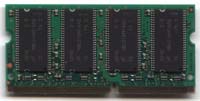
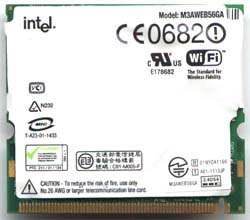
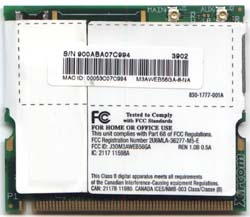
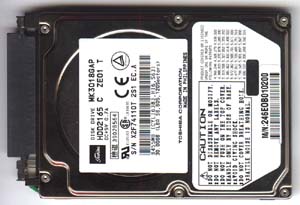

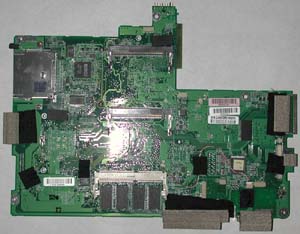
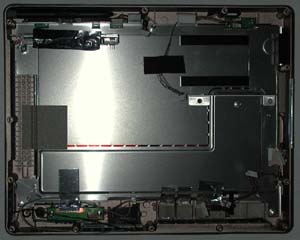
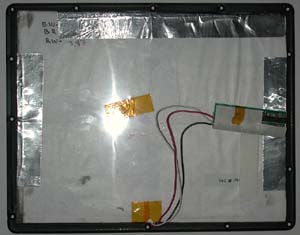








1 Comments
View All Comments
Poopship - Tuesday, December 18, 2012 - link
I asked for an ipad and this is what I got